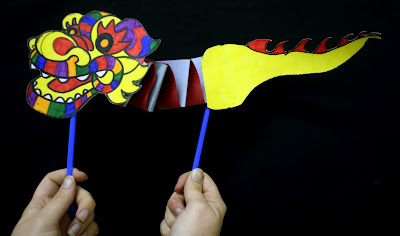Try It Out: Lekythos
Look at this interesting piece of pottery that we have in our David M. Robinson Collection of Greek and Roman art! What do you think they are? What do you think they could have been used for? What images do you see depicted on the surface?
These are called lekythoi (one = lekythos). Typically, the small vases were used to hold oil or perfumes and were frequently found in baths and gymnasiums. They were used often and were decorated to withstand a lot of wear and tear. Many were either all-black or decorated with red figures. The ones displayed above, however, are decorated with fine line drawings and are all-white, a style most commonly associated with funerary offerings!
Required Materials:
Air dry Clay (red will look the most authentic)
Black Paint
Paint brush
Optional Materials:
Paper plate with All-purpose flour
Wax Paper
Water and bowl
Clay tools or toothpicks
Estimated Time: 25 hrs, 30 minutes sculpting, 30 minutes painting, 24 hours to dry
 |
| What can the shape tell us about how this vase was used? What about the color? |
 |
| Look at this small opening, this probably wasn't used to pour something thick... |
These are called lekythoi (one = lekythos). Typically, the small vases were used to hold oil or perfumes and were frequently found in baths and gymnasiums. They were used often and were decorated to withstand a lot of wear and tear. Many were either all-black or decorated with red figures. The ones displayed above, however, are decorated with fine line drawings and are all-white, a style most commonly associated with funerary offerings!
 |
| Here is our completed lekythos with another replica. |
Required Materials:
Air dry Clay (red will look the most authentic)
Black Paint
Paint brush
Optional Materials:
Paper plate with All-purpose flour
Wax Paper
Water and bowl
Clay tools or toothpicks
Estimated Time: 25 hrs, 30 minutes sculpting, 30 minutes painting, 24 hours to dry
- Rub your hands in the flour so they don't stick to your clay.
- Open your clay on wax paper so it doesn't stick to the table. Depending on how big you'd like your lekythos to be, use 1 to 2 balls the size of a small fist.
- Roll the clay into as many "snakes" as you can.
- Coil one snake around itself to make a circle; this will be your base.
- Press your coiled circle together so it looks like a small cookie. You can use some of the water in your bowl to help smooth out the seams.
- Lift the "cookie" off the wax paper to make sure it doesn't stick.
- Take another coil and place it slightly inside the cookie shape and begin coiling. Continue to add snake coils so the walls of your vase start to build.
- Place one finger inside the vase to smooth the coils. The water can help blend everything together.
- Your vase should begin to reach a good height. Once it reaches your desired height, add a coil on the inside of the top of the vase to start closing it up. Pinch together.
- Wrap one coil around your finger. Pinch it together to form a smooth tube for your vase neck.
- Add the neck to your vase form. Smooth it together with the rest of the vase so it won't break off. Pinch one side to form a small circle on the side of the neck.
- Using a clay carving tool or toothpick, carve an uppercase-D into the middle of the circle.
- Poke out the uppercase-D and smooth out your handle.
- Use the clay carving tools or toothpicks to help smooth out the lekythos shape. Leave the vase overnight and wait for it to dry. While you wait for your lekythos to dry, watch the videos below to learn more about Greek and Roman art.
- Once the lekythos is dry, use black paint to add details! Use the surface of your lekythos to tell a story. Need some inspiration? Look at this amphora, another kind of vase used for storing water, to see some common themes in Greek art.
 |
| Exit Pursued by Griffin, Mr. Steven |

















